- Home
- David Weber
The Universe of Honor Harrington mth-4 Page 2
The Universe of Honor Harrington mth-4 Read online
Page 2
The interstellar drawbacks of impeller drive became quickly and disastrously clear to Beowulf's shipbuilders, and for several decades it seemed likely that the new drive would be limited solely to interplanetary traffic. In 1273 pd, however, the scientist Adrienne Warshawski of Old Terra recognized a previously unsuspected FTL implication of the new technology. Prior to her Fleetwing tests in that year, all efforts to employ it in hyper-space had ended in unmitigated disaster, but Dr. Warshawski found a way around the problem. She had already invented a new device capable of scanning hyper-space for grav waves and wave shifts within five light-seconds of a starship (to this day, all grav scanners are known as "warshawskis" by starship crews), which made it possible to use impeller drive between hyper-space grav waves, since they could now be seen and avoided.
That, alone, would have been sufficient to earn Warshawski undying renown, but beneficial as it was, its significance paled beside her next leap forward, for in working out her detector, Dr. Warshawski had penetrated far more deeply into the nature of the grav wave phenomenon than any of her predecessors, and she suddenly realized that it would be possible to build an impeller drive which could be reconfigured at will to project its grav waves at right angles to the generating vessel. There was no converging effect to move a pocket of normal-space, but these perpendicular grav fields could be brought into phase with the grav wave, thus eliminating the interference effect between impellers and the wave. More, the new fields would stabilize a vessel relative to the grav wave, allowing a transition into it which eliminated the traditional dangers grav shear presented to the ship's physical structure. In effect, the alterations she made to Fleetwing to produce her "alpha nodes" provided the ship with gigantic, immaterial sails: circular, plate-like gravity bands over two hundred kilometers in diameter. Coupled with her grav wave detector to plot and "read" grav waves, they would permit a starship to literally "set her sails" and use the focused radiation hurtling along hyper-space's naturally occurring grav waves to derive incredible accelerations.
Not only that, but the interface between sail and natural grav wave produced an eddy of preposterously high energy levels which could be "siphoned off" to power the starship. Effectively, once a starship "set sail" it drew sufficient power to maintain and trim its sails and also for every other energy requirement and could thus shut down its onboard power plants until the time came to leave hyper-space. A Warshawski Sail hypership thus had no need for reaction mass, required very little fuel mass, and could sustain high rates of acceleration indefinitely, which meant that the velocity loss associated with "cracking the wall" between hyper bands could be regained and that use of the upper bands was no longer impractical.
This last point was a crucial factor in attaining higher interstellar transit times. The maximum safe velocity in any hyper band remained .6 c, but the higher bands, with their closer point-to-point congruencies, added a significant multiplier to the FTL equivalent of that velocity. Prior to the Warshawski Sail, not only had dimension shear made translating into the upper bands dangerous, but the successive velocity losses had made it highly uneconomical for any reaction drive ship. Now the lost velocity could be rapidly regained and the higher, "faster" bands could be used to sustain a much higher average velocity. As a result, the dreaded grav wave became the path to ever more efficient hyper travel, and captains who had previously avoided them in terror now used their new instrumentation to find them and cruised on standard impeller drive between them.
Of course, there wasn't always a grav wave going the direction a starship needed, but with the grav detector to keep a ship clear of naturally occurring grav waves impeller drive could, at last, be used in hyper-space. In addition, it was possible for a Warshawski Sail ship to "reach" across a wave (which might be thought of as sailing with a "quartering breeze") at angles of up to about 60° before the sails began losing drive and up to approximately 85° before all drive was lost. By the same token, a hypership could sail "close-hauled," or into a grav wave, at approach angles of 45°. At angles above 45°, it was necessary to "tack into the wave," which naturally meant that return passages would be slower than outgoing passages through the same region of prevailing grav waves. Thus the old "windjammer" technology of Earth's seas had reemerged in the interstellar age, transmuted into the intricacies of hyper-space and FTL travel. By 1750 pd, however, sail tuners had been upgraded to a point which permitted the "grab factor" of a sail to be manipulated with far more sophistication than Dr. Warshawski's original technology had permitted. Indeed, it became possible to create a negative grab factor which, in effect, permitted a starship to sail directly "into the wind," although with a marginally greater danger of sail failure.
The Warshawski Sail also made it possible to "crack the wall" between hyper bands with much greater impunity. Breaking into a higher hyper band was (and is) still no bed of roses, and ships occasionally come to grief in the transition even today, but a Warshawski Sail ship inserts itself into a grav wave going in the right direction and rides it through, rather like an aircraft riding an updraft. This access to the higher bands meant the first generation Warshawski Sail could move a starship at an apparent velocity of just over 800 c, but an upper limit on velocity remained, created by the range capability of the vessel's grav wave detectors. In the higher bands, the grav waves were both more powerful and tightly-spaced due to the increasingly stressed nature of hyper-space in those regions. This meant that the five-light-second detection range of the original Warshawski offered insufficient warning time to venture much above the gamma bands, thus imposing the absolute speed limitation. In addition, the problems of acceleration remained. The Warshawski Sail could be adjusted by decreasing the strength of the field, thus allowing a greater proportion of the grav wave's power to "leak" through it, to hold acceleration down to something a human body could tolerate, but the old bugaboo of "g forces" remained a problem for the next century or so.
Then, in 1384 pd, a physicist by the name of Shigematsu Radhakrishnan added another major breakthrough in the form of the inertial compensator. The compensator turned the grav wave (natural or artificial) associated with a vessel into a sort of "inertial sump," dumping the inertial forces of acceleration into the grav wave and thus exempting the vessel's crew from the g forces associated with acceleration. Within the limits of its efficiency, it completely eliminated g force, placing an accelerating vessel in a permanent state of internal zero-gee, but its capacity to damp inertia was directly proportional to the power of the grav wave around it and inversely proportional to both the volume of the field and the mass of the vessel about which it was generated. The first factor meant that it was far more effective for starships than for sublight ships, as the former drew upon the greater energy of the naturally occurring grav waves of hyper-space, and the second meant it was more effective for smaller ships than for larger ones. The natural grav waves of hyper-space, with their incomparably greater power, offered a much "deeper" sump than the artificial stress bands of the impeller drive, which meant that a Warshawski Sail ship could deflect vastly more g force from its passengers than one under impeller drive. In general terms, the compensator permitted humans to endure acceleration rates approaching 550 g under impeller drive and 4-5,000 g under sail, which allows hyperships to make up "bleed-off" velocity very quickly after translation. These numbers are for military compensators, which tend to be more massive, more energy and maintenance intensive, and much more expensive than those used in most merchant construction. Military compensators allow higher acceleration — and warships cannot afford to be less maneuverable than their foes — but only at the cost of penalties merchant ships as a whole cannot afford.
In practical terms, the maximum acceleration a ship can pull is defined in Figure 2.
These accelerations are with inertial compensator safety margins cut to zero. Normally, warships operate with a 20% safety margin, while MS safety margins run as high as 35%. Note also that the cargo carried by a starship is less important than t
he table above might suggest. The numbers in Figure 2 use mass as the determining factor, but the size of the field is of very nearly equal importance. A 7.5 million-ton freighter with empty cargo holds would require the same size field as one with full holds, and so would have the same effective acceleration capability.
Note also that in 1900 pd, 8,500,000 tons represented the edge of a plateau in inertial compensator capability. Above 8,500,000 tons, warship accelerations fell off by approximately 1 g per 2,500 tons, so that a warship of 8,502,500 tons would have a maximum acceleration of 419 g and a warship of 9,547,500 tons would have a maximum acceleration of 1 g. The same basic curves were followed for merchant vessels.
In 1502 pd, the first practical countergravity generator was developed by the Anderson Shipbuilding Corporation of New Glasgow. This had only limited applications for space travel (though it did mean cargoes could be lifted into orbit for negligible energy costs), but incalculable ones for planetary transport industries, rendering rail, road, and oceanic transport of bulk cargoes obsolete overnight. In 1581 pd, however, Dr. Ignatius Peterson, building on the work of the Anderson Corporation, Dr. Warshawski, and Dr. Radhakrishnan, mated countergrav technology with that of the impeller drive and created the first generator with sufficiently precise incremental control to produce an internal gravity field for a ship, thus permitting vessels with inertial compensators to be designed with a permanent up/down orientation. This proved a tremendous boon to long-haul starships, for it had always been difficult to design centrifugal spin sections into Warshawski Sail hyperships. Now that was no longer necessary. In addition, the decreased energy costs to transfer cargo in and out of a gravity well, coupled with the low energy and mass costs of the Warshawski sail itself and the greatly decreased risks of dimensional and grav shear, interstellar shipment of bulk cargo became a practical reality. In point of fact, on a per-ton basis, interstellar freight can be moved more cheaply than by any other form of transport in history.
By 1790 pd, the latest generation Warshawskis could detect grav wave fronts at ranges of up to just over twenty light-seconds. A hundred years later (the time of our story) the range is up to eight light-minutes for grav wave detection and 240 light-seconds (4 light-minutes) for turbulence detection. As a result, 20th Century pd military starships routinely operate as high as the theta band of hyper-space. This translates an actual velocity of .6 c to an apparent velocity of something like 3,000 c. The explored hyper bands and their bleed-off factors and speed multipliers over normal-space are given in Figure 3.
In addition to his inertial compensator, Dr. Radhakrishnan also enjoys the credit for being the first to develop the math to predict and detect wormhole junctions, although the first was not actually detected until 1447 pd, many years after his death. The mechanism of the junction is still imperfectly understood, but for all intents and purposes a junction is a "gravity fault," or a gravitic distortion so powerful as to fold hyper-space and breach the interface between it and normal-space. The result is a direct point-to-point congruence between points in normal-space which are seldom separated by less than 100 light-years and may be separated by several thousand. A hyper drive is required to utilize them, and ships cannot maintain stability or course control through a wormhole junction without Warshawski Sails. Nonetheless, the movement from normal-space to normal-space is effectively instantaneous, regardless of the distance traversed, and the energy cost is negligible.
The use of the junctions required the evolution of a new six-dimensional math, but the effort was well worthwhile, particularly since a single wormhole junction may have several different termini. Wormholes remain extremely rare phenomena, and astrophysicists continue to debate many aspects of the theories which describe them. No one has yet proposed a technique to mathematically predict the destinations of any given wormhole with reliable accuracy, but work on better models continues. At the present, mathematics can generally predict the total number of termini a wormhole will possess, but the locations of those termini cannot be ascertained without a surveying transit, and such first transits remain very tricky and dangerous.
There are other ambiguities in the current understanding of wormholes, as well. In theory, for example, one should be able to go from any terminus of a wormhole junction directly to any other. In fact, one may go from the central nexus of the junction to any of its other termini and vice versa but cannot reach any secondary terminus from another secondary. That is, one might go from point A to points B, C, or D but could not go from B to C or D without returning to A and reorienting one's vessel.
Despite their incompletely understood nature, the junctions opened a whole new aspect of FTL travel and became focusing points or funnels for trade. There were not many of them, and one certainly could not use them to travel directly to any star not connected to them, but one could move from any star within a few dozen light years of a wormhole terminus to the terminus then jump instantly three or four hundred light-years in the direction of one's final destination with a tremendous overall savings in transit time.
In addition, of course, the discovery of wormhole junctions and a technique for their use imposed an entirely new pattern on the ongoing Diaspora. Theretofore, expansion had been roughly spherical, spreading out from the center in an irregular but recognizable globular pattern. Thereafter, expansion became far more ragged as wormhole junctions gave virtually instantaneous access to far distant reaches of space. Moreover, wormhole junctions are primarily associated with mid-range main sequence stars (F, G, and K), which gives a high probability of finding habitable planets in relatively close proximity to their far termini.
Once initial access to the far end of a wormhole junction had been attained, the habitable world at the far end (if there was one) tended to act as the central focus for its own "mini-Diaspora," creating globular quadrants of explored space which might be light-centuries away from the next closest explored star system.
(2) Warshawski Sail Logistics
By their very natures, the impeller drive and Warshawski Sail had a tremendous impact on the size of spacecraft. With the advent of the impeller drive, mass as such ceased to be a major consideration for sublight travel. With the introduction of the Warshawski Sail, the same became true for starships, as well. In consequence, bulk cargo carriers are entirely practical. Transport of interplanetary or interstellar cargoes is actually cheaper than surface or atmospheric transportation (even with countergrav transporters), though even at 1,200 c (the speed of an average bulk carrier) hauling a cargo 300 light-years takes 2.4 months. It is thus possible to transport even such bulk items as raw ore or food stuffs profitably over interstellar distances.
By the same token, this mass-carrying capability means interstellar military operations, including planetary invasions and occupations, are entirely practical. A starship represents a prodigious initial investment (more because of its size than any other factor), but it will last almost forever, its operational costs are low, and a ship which can be configured to carry livestock and farm equipment can also be configured to carry assault troops and armored vehicles.
Hyperships come in three basic categories: the low-speed bulk carrier; the high-speed personnel carrier; and warships.
The maximum acceleration and responsiveness of a Warshawski Sail starship is dependent upon the power or "grab value" of its sails and the efficiency of its inertial compensator. The more powerful (and massive) the sail generator, the greater the efficiency with which it can utilize the power of the grav wave; the more efficient the compensator, the higher the acceleration its crew can endure. Moreover, it requires an extraordinarily powerful sail, relative to the mass of the mounting ship, to endure the violent conditions of the upper hyper bands. This means that larger ships, with the hull volume to devote to really powerful sails, have greater inherent power and maximum theoretical average velocities (transit times) because they ought to be able to pull more acceleration from a given grav wave (thus reaching their optimum velocity of .6 c more rapi
dly) and to access the higher hyper bands (where the "shorter" distances effectively multiply their .6 c constant velocity by a quite preposterous factor).
There are, however, offsetting factors. The more powerful a Warshawski Sail, the slower its response time in realigning to a shift in the grav wave. This is potentially disastrous, but is, once more, offset to some extent by the ability of the more powerful sail to withstand greater stress. That is, it isn't as necessary to the starship's survival that it be able to reset or trim a sail to survive fluctuations in the grav wave about it. Put another way, a bigger ship with more powerful generators can "carry more sail" under given grav wave conditions than a smaller vessel and, all other things being equal, run the smaller vessel down.
But, of course, things aren't quite that simple. For starters, a smaller, less massive vessel gains more drive from the same sail strength. Because it is less massive, it accelerates more quickly for the same power. And the inertial compensator, marvelous as it may be, becomes more effective as its field area grows smaller and the mounting vessel's mass decreases, which means that a smaller ship can take advantage of its acceleration advantage over a larger vessel riding the same grav wave (and hence having access to the same "inertia sump") without killing its crew. If the smaller vessel can accelerate to .6 c (the highest survivable speed in hyper-space) before the larger ship, the larger ship's theoretical speed advantage is meaningless, as it can never overhaul. Under extreme grav wave conditions, the larger ship can maintain a greater effective acceleration, compensator or no, because the smaller ship's lighter sails are forced to "reef" (reduce their "grab factor") lest their generators burn out. This is particularly true in and above the zeta band, and few merchant ships ever venture that high. Even fairly small warships tend to have extremely powerful sails for their displacement, so that they can reach those higher bands, but smaller ships are simply unable to match the mass of a large ship's sail generators. This means that in some circumstances the larger ship can climb higher in the hyper bands and/or derive sufficiently more usable drive from a grav wave to offset its lower compensator efficiency.

 A Call to Vengeance
A Call to Vengeance March Upcountry
March Upcountry The Service of the Sword
The Service of the Sword Worlds of Honor
Worlds of Honor The Sword of the South
The Sword of the South Mission of Honor
Mission of Honor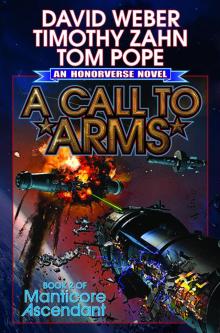 A Call to Arms
A Call to Arms The Captain From Kirkbean
The Captain From Kirkbean March to the Sea
March to the Sea House of Steel: The Honorverse Companion
House of Steel: The Honorverse Companion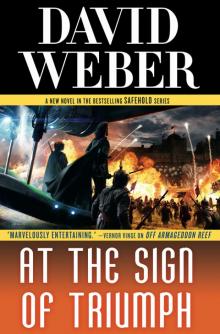 At the Sign of Triumph
At the Sign of Triumph Like a Mighty Army
Like a Mighty Army Heirs of Empire
Heirs of Empire March to the Stars
March to the Stars Oath of Swords
Oath of Swords On Basilisk Station
On Basilisk Station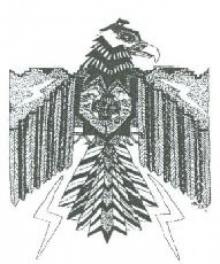 Oath of Swords and Sword Brother
Oath of Swords and Sword Brother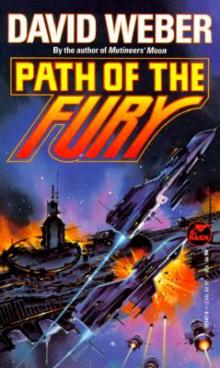 Path of the Fury
Path of the Fury A Mighty Fortress
A Mighty Fortress War of Honor
War of Honor 1633
1633 In Fury Born
In Fury Born Crusade
Crusade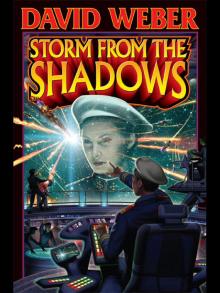 Storm From the Shadows
Storm From the Shadows In Fire Forged
In Fire Forged A Beautiful Friendship
A Beautiful Friendship Into the Light
Into the Light Shadow of Freedom
Shadow of Freedom How Firm a Foundation
How Firm a Foundation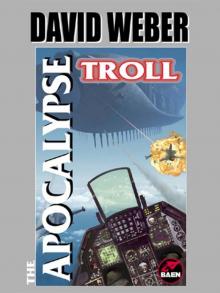 The Apocalypse Troll
The Apocalypse Troll More Than Honor
More Than Honor Crown of Slaves
Crown of Slaves The Gordian Protocol
The Gordian Protocol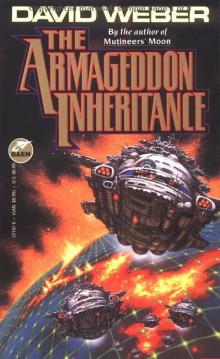 The Armageddon Inheritance
The Armageddon Inheritance Out of the Dark
Out of the Dark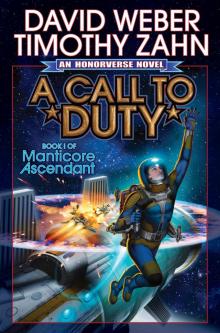 A Call to Duty
A Call to Duty The Shadow of Saganami
The Shadow of Saganami Wind Rider's Oath
Wind Rider's Oath The Stars at War
The Stars at War Uncompromising Honor - eARC
Uncompromising Honor - eARC Fire Season
Fire Season A Rising Thunder
A Rising Thunder Off Armageddon Reef
Off Armageddon Reef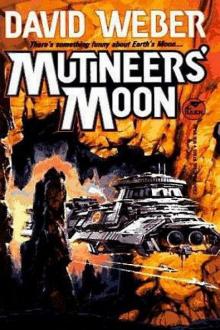 Mutineer's Moon
Mutineer's Moon Hell Hath No Fury
Hell Hath No Fury Worlds of Weber
Worlds of Weber Through Fiery Trials--A Novel in the Safehold Series
Through Fiery Trials--A Novel in the Safehold Series Insurrection
Insurrection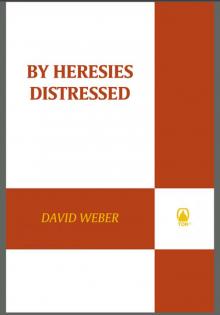 By Heresies Distressed
By Heresies Distressed War Maid's Choice
War Maid's Choice At All Costs
At All Costs Shadow of Victory
Shadow of Victory Through Fiery Trials
Through Fiery Trials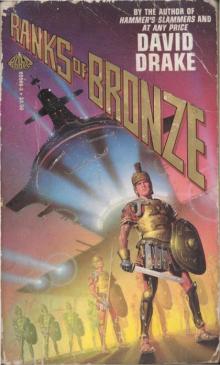 Ranks of Bronze э-1
Ranks of Bronze э-1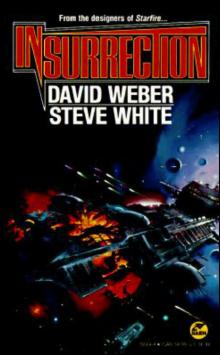 The Insurrection
The Insurrection Safehold 10 Through Fiery Trials
Safehold 10 Through Fiery Trials Old Soldiers
Old Soldiers In Death Ground s-2
In Death Ground s-2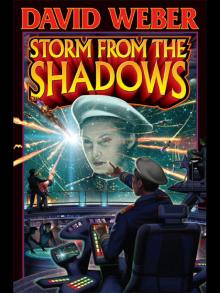 Storm from the Shadows-OOPSIE
Storm from the Shadows-OOPSIE In Enemy Hands hh-7
In Enemy Hands hh-7 Hell's Gate-ARC
Hell's Gate-ARC The Armageddon Inheritance fe-2
The Armageddon Inheritance fe-2 War Maid's choice wg-4
War Maid's choice wg-4 A Call to Vengeance (Manticore Ascendant Book 3)
A Call to Vengeance (Manticore Ascendant Book 3) Heirs of Empire fe-3
Heirs of Empire fe-3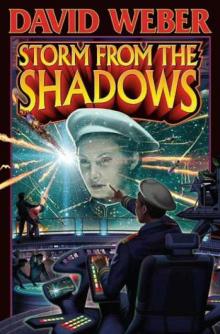 Storm From the Shadows si-2
Storm From the Shadows si-2 Honor Among Enemies hh-6
Honor Among Enemies hh-6 Changer of Worlds woh-3
Changer of Worlds woh-3 Bolo! b-1
Bolo! b-1 Flag In Exile hh-5
Flag In Exile hh-5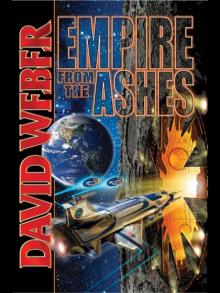 Empire from the Ashes
Empire from the Ashes Cauldron of Ghosts
Cauldron of Ghosts Torch of Freedom
Torch of Freedom March To The Sea im-2
March To The Sea im-2 Shadow of Saganami
Shadow of Saganami In Fire Forged: Worlds of Honor V-ARC
In Fire Forged: Worlds of Honor V-ARC Cauldron of Ghosts (eARC)
Cauldron of Ghosts (eARC)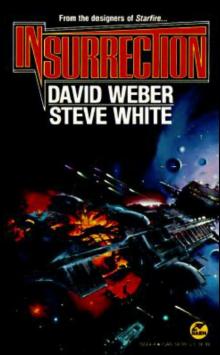 Insurrection s-4
Insurrection s-4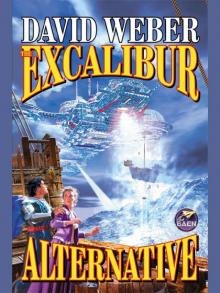 The Excalibur Alternative
The Excalibur Alternative Shadow of Freedom-eARC
Shadow of Freedom-eARC The Short Victorious War
The Short Victorious War Manticore Ascendant 1: A Call to Duty (eARC)
Manticore Ascendant 1: A Call to Duty (eARC) Beginnings-eARC
Beginnings-eARC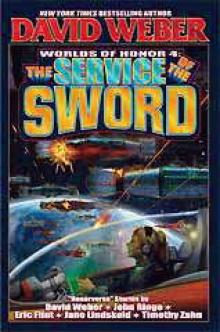 The Service of the Sword woh-4
The Service of the Sword woh-4 The Sword of the South - eARC
The Sword of the South - eARC Treecat Wars sh-3
Treecat Wars sh-3 Worlds of Honor woh-2
Worlds of Honor woh-2 Fire Season sk-2
Fire Season sk-2 March To The Stars im-3
March To The Stars im-3 Echoes Of Honor hh-8
Echoes Of Honor hh-8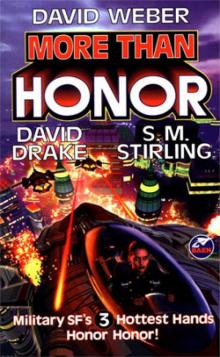 A Beautiful Friendship mth-1
A Beautiful Friendship mth-1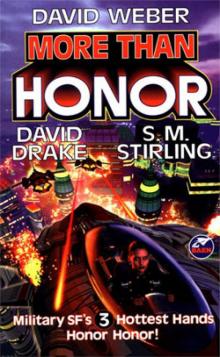 The Universe of Honor Harrington mth-4
The Universe of Honor Harrington mth-4 In Fire Forged: Worlds of Honor V
In Fire Forged: Worlds of Honor V Mission of Honor-ARC
Mission of Honor-ARC March Upcountry im-1
March Upcountry im-1 Sword Brother wg-4
Sword Brother wg-4 Manticore Ascendant 3- A Call to Vengeance
Manticore Ascendant 3- A Call to Vengeance We Few
We Few Hell's Gate m-1
Hell's Gate m-1 Throne of Stars
Throne of Stars Empire of Man
Empire of Man The War God's Own wg-2
The War God's Own wg-2 Wind Rider's Oath wg-3
Wind Rider's Oath wg-3 A Rising Thunder-ARC
A Rising Thunder-ARC Torch of Freedom wos-2
Torch of Freedom wos-2 War Of Honor hh-10
War Of Honor hh-10 How Firm a Foundation (Safehold)
How Firm a Foundation (Safehold)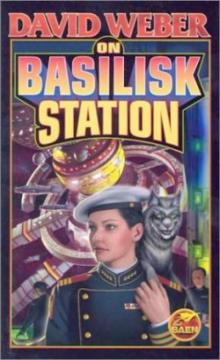 On Basilisk Station hh-1
On Basilisk Station hh-1 The Honor of the Qween hh-2
The Honor of the Qween hh-2 War Maid's Choice-ARC
War Maid's Choice-ARC Oath of Swords-ARC
Oath of Swords-ARC Oath of Swords wg-1
Oath of Swords wg-1 A Beautiful Friendship-ARC
A Beautiful Friendship-ARC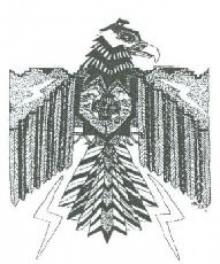 Sword Brother
Sword Brother Shiva Option s-3
Shiva Option s-3 Sir George And The Dragon
Sir George And The Dragon Ashes Of Victory hh-9
Ashes Of Victory hh-9 A Rising Thunder hh-13
A Rising Thunder hh-13 The Road to Hell - eARC
The Road to Hell - eARC Hell Hath No Fury m-2
Hell Hath No Fury m-2 The Road to Hell (Hell's Gate Book 3)
The Road to Hell (Hell's Gate Book 3)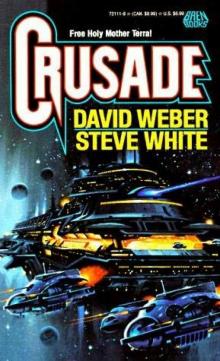 Crusade s-1
Crusade s-1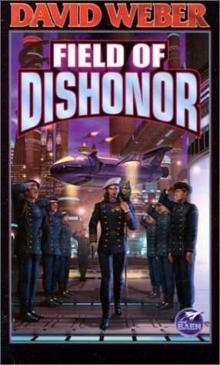 Field Of Dishonor hh-4
Field Of Dishonor hh-4 The Honor of the Queen
The Honor of the Queen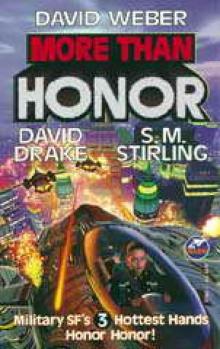 More Than Honor woh-1
More Than Honor woh-1 In Fury Born (ARC)
In Fury Born (ARC)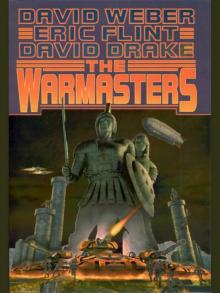 The Warmasters
The Warmasters The Short Victorious War hh-3
The Short Victorious War hh-3 The Shadow of Saganami si-1
The Shadow of Saganami si-1 Empire of Man 01 - March Upcountry
Empire of Man 01 - March Upcountry How firm a foundation s-5
How firm a foundation s-5 Treecat Wars
Treecat Wars